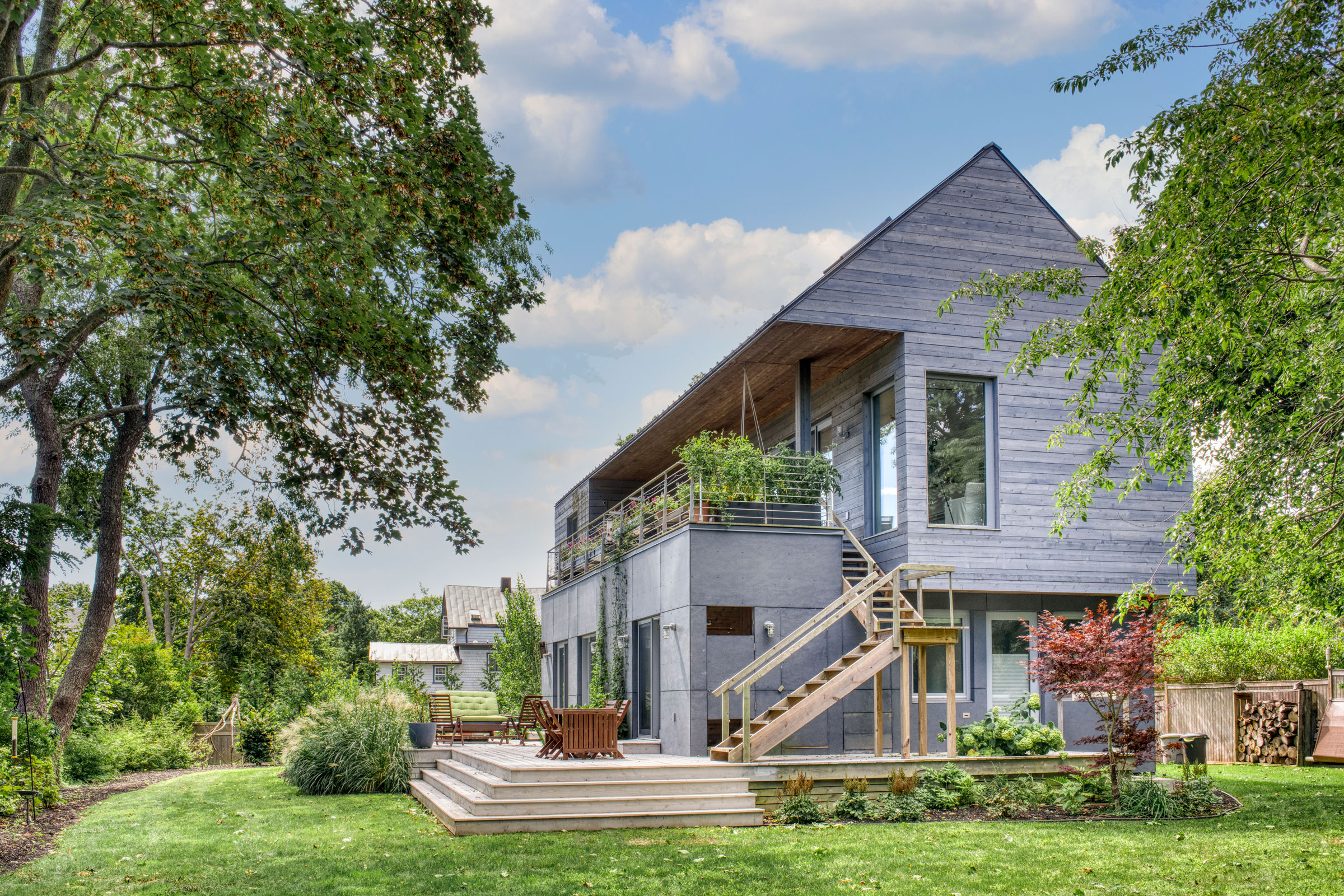Story at a glance:
- Green home improvements can help reduce your household’s energy and water consumption, improve indoor air quality, and even increase property value.
- Upgrading your insulation, sealing air leaks, replacing outdated appliances, and installing LED lights are all improvements that can increase your home’s energy-efficiency.
- Planting trees and landscaping with native plants can help improve your home’s overall environmental impact by sequestering carbon, reducing water usage, and reintroducing biodiversity.
Whether you aim to have some of the most sustainable housing or just want to make some minor green home improvements, there are a variety of ways to improve the style, functionality, and efficiency of your household that also minimize environmental impact.
Some of the more complex green home improvements—like installing solar panels or a solar-reflective roof—can even increase your home’s value and ROI.
Green home improvements can be as simple as switching out your old fluorescent light bulbs for LEDs or as involved as installing a geothermal heat pump or a plumbing-integrated rainwater harvesting system. In this article we’ll explore 20 green home improvements you can make to improve your household’s overall sustainability.
What Makes a Home Improvement “Green?”
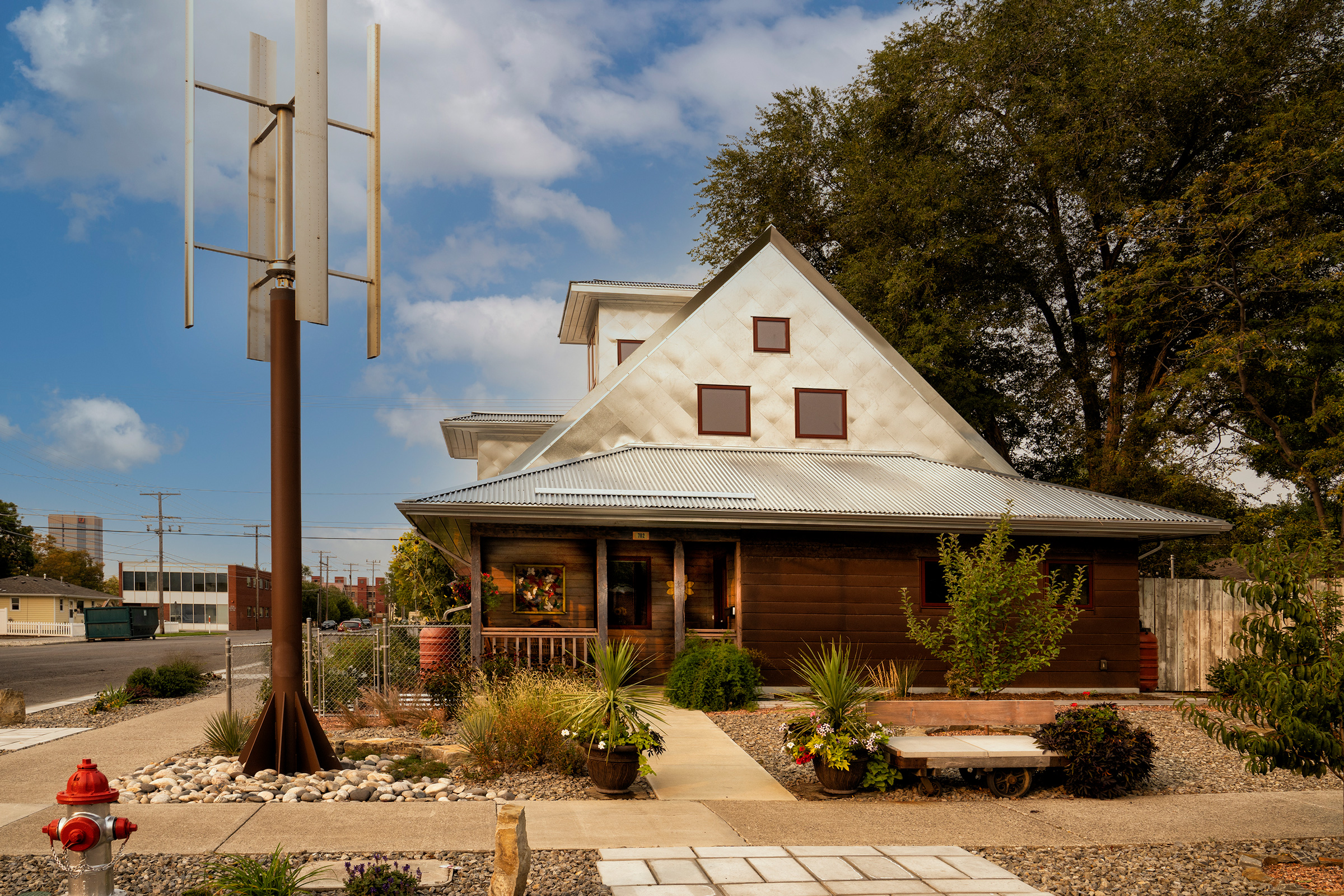
The LEED Platinum Urban Frontier House is a customized solution built by integrating existing systems in a new way to create a home that is scalable, replicable, and affordable. Photo by Clark Marten
For the purposes of this article, green home improvements include any change or upgrade made to a home that increases energy efficiency, reduces water consumption, minimizes waste, or lessens the structure’s overall environmental impact and carbon footprint.
Benefits of Making Green Home Improvements

Making extensive green home improvements can help reduce utility expenses, increase property value, and create a healthier indoor environment. Photo by Carl Sterner
Before we get into the examples, let’s briefly cover some of the main benefits of making green improvements to your home.
Reduced Operating Costs
A vast majority of green home improvements help to improve energy or water efficiency and reduce both the home’s carbon footprint and its operating costs, resulting in lower monthly utility bills. It’s estimated that making improvements like upgrading your insulation, air-sealing your home, and updating your HVAC system can help you save approximately 30% on your utility bills, according to the DOE.
Increased Property Value & ROI
Because most green home improvements increase energy efficiency and help homeowners save money—something prospective buyers desire—they increase a home’s value and overall ROI. Something as simple as installing solar panels, for instance, can increase a house’s appraisal value by an average of 4.1%, according to a study conducted by Zillow.
A 2022 study conducted by the DOE’s Lawrence Berkeley National Laboratory looked at the relationship between a property’s Home Energy Score (HES) and its valuation and found that final home prices were 0.4% higher for every $100 decrease of the HES’ estimated utility bills.
Improved Indoor Environment
Green home improvements that focus on using sustainable, nontoxic materials and products have the added benefit of improving indoor environmental quality. This is because green materials and products are typically low in, or do not emit, volatile organic compounds (VOCs). VOCs have a high vapor pressure at room temperature and off-gas molecules into the surrounding air.
When present in high concentrations for long periods of time, VOCs can cause or exacerbate respiratory illnesses and even cause certain cancers.
20 Green Home Improvement Ideas
1. Switch to LED Lighting
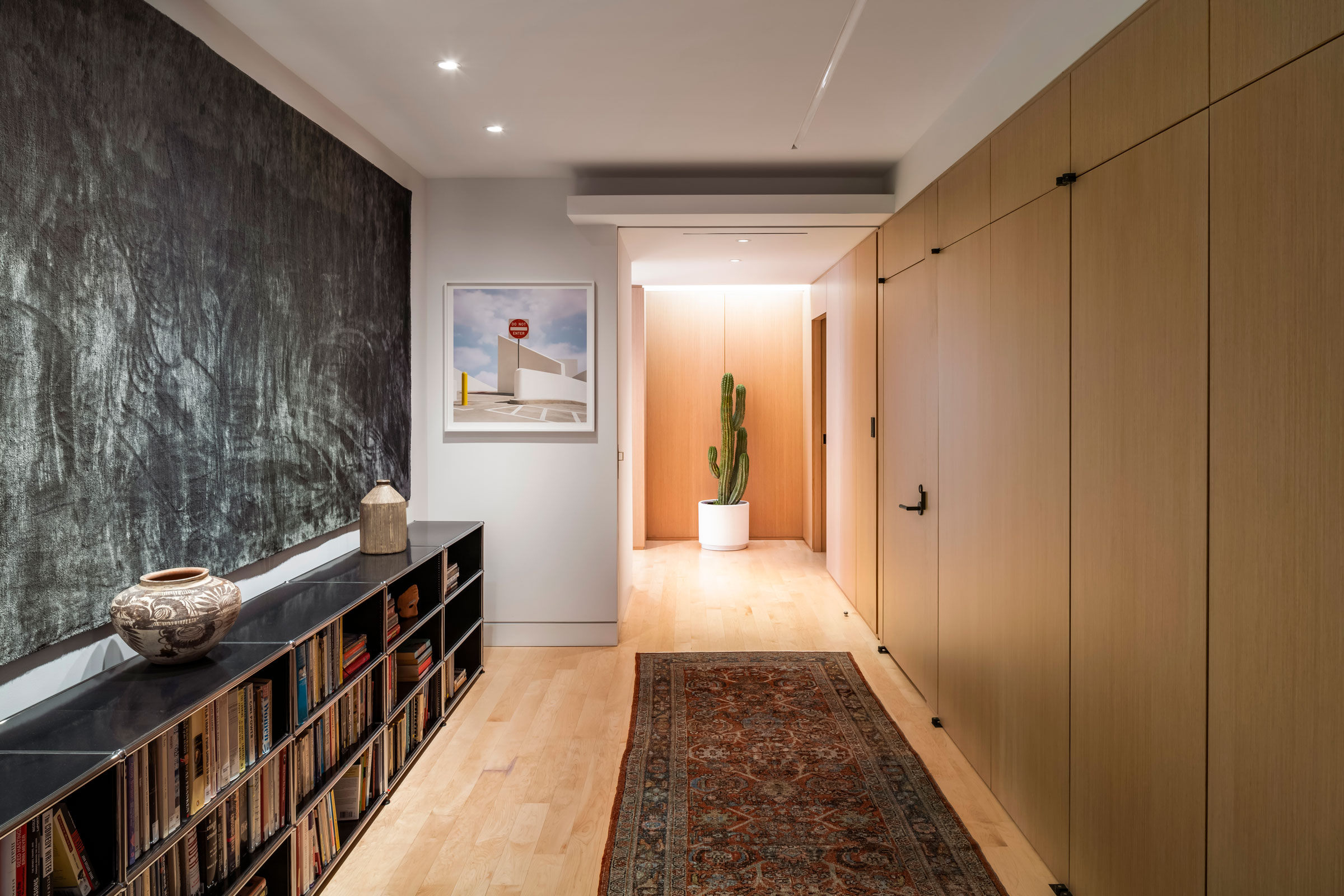
This Gluck+ California house features all LED lighting. Photo by Paul Vu Photography
LEDs are the most energy-efficient lighting option on the market and consistently outperform halogen, incandescent, and fluorescent light fixtures. Most LEDs use up to 90% less energy than traditional incandescent lights and produce almost no heat whatsoever.
Due to their lack of filament (the part that burns out in incandescent bulbs) and high-voltage electrical parts (the parts that typically fail in the case of fluorescents), as well as their use of epoxy resin over glass, LED lights are much more durable than traditional light bulbs while also possessing a much longer shelf life.
On average LEDs have an operational lifespan of 50,000 to 100,000 hours, or between 10 and 20 years depending on the frequency of use. This lifespan is nearly 25 times longer than conventional incandescent bulbs and four times longer than most compact fluorescent bulbs.
2. Install Solar Panels
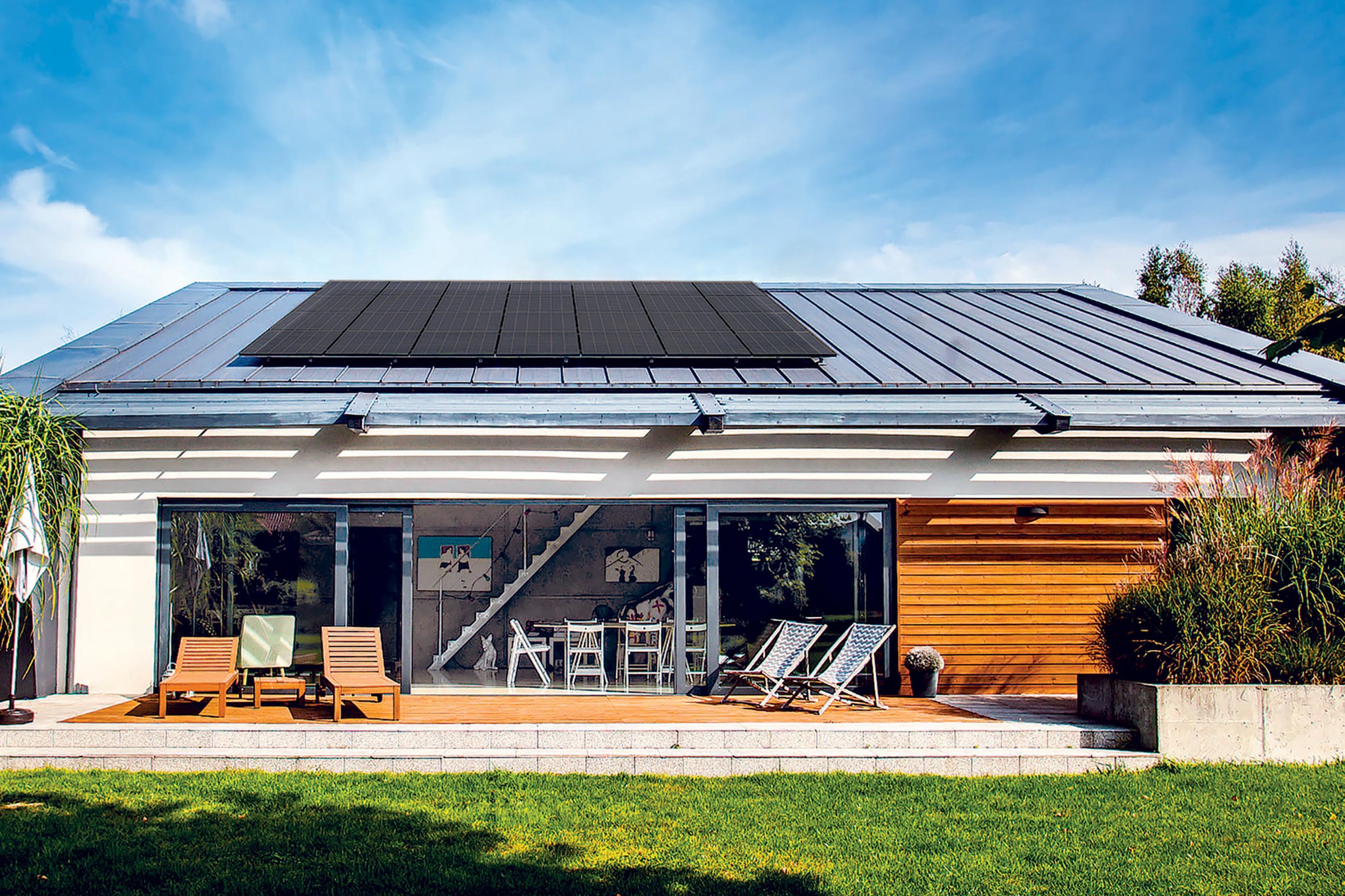
Solar panels can help reduce monthly utility bills and increase a home’s value by approximately 4.%. Photo courtesy of Q Cells
Onsite renewable energy production is one of the hallmarks of a truly sustainable house, and solar panels are the easiest way to achieve that goal. As long as they are strategically placed and angled—and climate conditions permit—solar panels can feasibly produce energy for all or a portion of the year in a variety of geographic regions.
On average residential solar panel systems save households approximately $1,500 a year on electricity bills and produce 12 times fewer CO2 emissions than natural gas. Depending on how efficient your solar panels are and the amount of energy they are capable of generating, your household may even be able to sell excess electricity back to your local energy provider for a profit.
In the US residential solar energy assistance programs and incentives (e.g. tax credits) exist at both the state and federal levels, making it that much easier for households to afford and install solar panels. A full guide to energy-related federal financial assistance programs can be found on the DOE’s website.
3. Use Low-VOC Paints
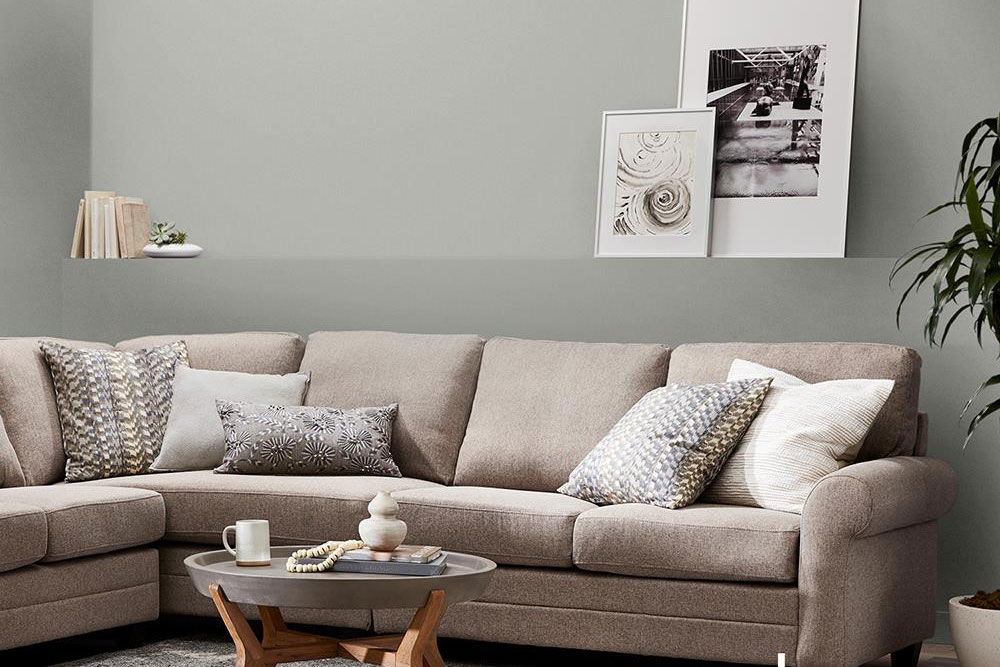
Valspar’s Signature paint is one of this brand’s low/no VOC offerings. Photo courtesy of Valspar
If you’re looking to update your home’s interior walls with a new coat of paint, choosing an eco-friendly paint that is low in VOCs can help enhance both the aesthetic value of your home and the quality of the air you breathe. Traditional oil- and solvent-based paints frequently contain VOCs that, over time, can release dangerous chemicals into the air, increasing the risk of occupants developing debilitating respiratory conditions and even certain cancers.
Low-VOC and VOC-free paints, on the other hand, are typically water-based and contain little to no hazardous compounds, though they often contain higher concentrations of semi-volatile organic compounds. Low-VOC paints limit VOCs to 50 grams or less per liter—an amount much lower than the federal minimum—and do not smell as strongly as conventional paints.
When choosing an eco-friendly paint, look for those bearing a Cradle-to-Cradle, GreenSeal, MPI Extreme Green, or GREENGUARD certification.
4. Switch to a Tankless Water Heater
While the true efficiency of a tankless water heater ultimately depends on how much hot water your household uses in a day, there’s no doubt tankless water heaters are more efficient than conventional storage tank heaters. They also produce fewer GHG emissions.
A smaller household, or one that uses less than 41 gallons of hot water a day, for example, can expect to use anywhere from 24 to 34% less energy by switching to a tankless water heater. Larger households that use closer to 86 gallons of hot water a day, on the other hand, may only use 8 to 14% less energy, which still helps save money and energy in the long run.
5. Install Sustainable Flooring
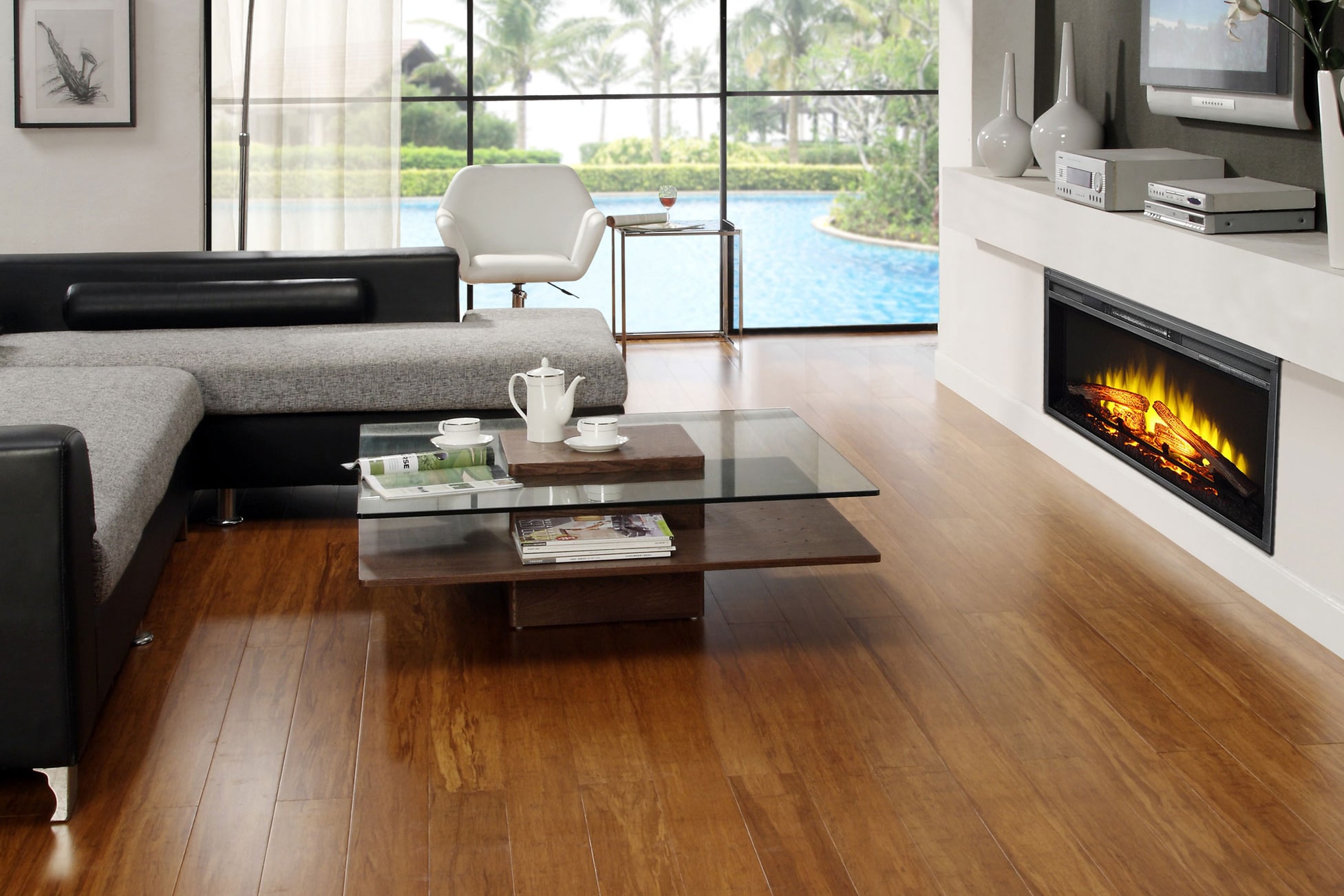
Strand bamboo flooring. Photo courtesy of dasso USA
If it’s time to replace existing flooring there are plenty of environmentally friendly flooring options on the market.
Hardwood flooring is an incredibly popular and versatile flooring option that, when bought from an FSC-certified manufacturer, is relatively low impact, as it is a renewable material that sequesters carbon throughout its entire life cycle. Hardwood flooring is also quite durable and can be refinished multiple times throughout its operational lifespan.
“By choosing a good quality hardwood floor that will withstand the test of time, customers can save significantly over the years through refurbishing instead of replacing floors,” Dave Darche, national market manager for Bona US, previously wrote for gb&dPRO.
Bamboo is another sustainable flooring option. Unlike hardwoods, which typically require 20 years before they can be harvested, bamboo can be harvested every three to five years without damaging the base of the plant itself, meaning each bamboo culm can be harvested multiple times throughout its life. Once processed bamboo flooring looks very similar to hardwood flooring and possesses many of the same desirable qualities while also being highly water-resistant and hypoallergenic.
Alternatively, you could opt for stone or porcelain tile, both of which possess excellent durability and are highly water-resistant, making them ideal for bathrooms.
6. Seal Air Leaks
Air leaks account for approximately 25 to 40% of the energy used to cool and heat a home, according to Energy Star. Even worse, air leaks can also significantly reduce the effectiveness of your home’s other energy-saving features, leading to the waste of energy, time, and money.
Taking care to verify that all seals around doors, windows, and other potential openings are airtight—and resealing those that aren’t—will drastically minimize the amount of heat gained during the summer and heat lost during the winter months.
Attics can also be a significant source of heat gain and loss, so it’s recommended that you have a professional inspect whether your attic needs to air-sealed as well.
7. Invest in a Geothermal Heat Pump

The home includes a solar array on the roof, a rainwater harvesting system, radiant floor heating, and a geothermal heating and cooling system. Photo courtesy of REHAU
Solar is not your home’s only option when it comes to renewable energy. Geothermal heating has become increasingly popular in recent years in large part due to its high potential for energy savings. Using a series of underground pipes, geothermal heating systems pump heat from the earth into your home in the winter and remove heat during the summer. It’s estimated that geothermal heat pumps use 44% less energy than air-source heat pumps and 72% less than standard air conditioning units, according to the DOE.
Geothermal heating systems are also easier to retrofit than some other green energy systems. This is especially true of homes whose current climate control systems use propane, natural gas, or heating oil, as the hardware for the geothermal heat pump will easily fit in the space left behind and may even be compatible with the existing ductwork.
Installing a geothermal heat pump in place of an electrical HVAC system is a bit more complicated, but not impossible. In either case installation will require a not-insignificant amount of excavation and will likely disturb existing landscaping to some degree.
8. Upgrade Your Insulation

Greenfiber’s wall insulation starts as a plant material, is made into paper, and reused as insulation. Photo courtesy of Greenfiber
Typically new homes are insulated with fiberglass insulation, polyurethane foam insulation, or a mix of both—and while these both have high R-values (2.2 to 2.7 per inch, and 6.5 to 6.7 per inch, respectively), they aren’t particularly sustainable in that they often contain harmful chemicals that are hazardous to human health.
Fortunately there are a number of natural insulation alternatives that exist, such as wood-fiber cellulose, Rockwool, hemp, sheep’s wool, and even straw. Depending on the thickness of the insulating layer, many of these options offer similar or better thermal retention than traditional fiberglass insulation.
Wood-fiber cellulose insulation—such as that produced by Greenfiber—has an R-value between 3.2 to 3.8 per inch, while sheep’s wool insulation has an R-value of 3.6 to 4.3 per inch. That said, few insulation materials rival the R-value of traditional polyurethane foam, but ongoing tests are being conducted on plant-based polyurethane foam insulation, which could yield similar thermal retention properties.
Ultimately upgrading your insulation reduces the amount of heat gained and lost throughout the year, which subsequently minimizes the energy spent—and emissions produced—on cooling and heating your home.
9. Install a Cool Roof
If you live in a warmer region that receives a lot of sunlight throughout the year, your roof may be working against you when trying to keep the interior cool. Traditional dark-colored roofs can reach temperatures of up to 150°F or more during the summer, forcing your air conditioning to work over time.
Cool roofs, on the other hand, are much lighter in color (typically white) and implement coatings that reflect sunlight rather than absorb it. “Just as wearing light-colored clothing can help keep a person cool on a sunny day, cool roofs use solar-reflective surfaces to maintain lower roof temperatures,” Lon Bauer, product development manager at APV Engineered Coatings, previously wrote for gb&dPRO.
Any heat that is absorbed is effectively emitted back into the air, rather than the building itself. On average cool roofs stay at least 50 degrees cooler than dark roofs under the same conditions, according to the DOE.
10. Replace Outdated Appliances
Another way to improve your home’s overall sustainability is by replacing inefficient and outdated appliances with energy-efficient versions.
If you’re having trouble determining whether an appliance is efficient, check to see if it bears an ENERGY STAR label. If it does the appliance has been deemed energy-efficient according to guidelines set by the EPA or the DOE. In most cases ENERGY STAR appliances significantly exceed federal standards for both quality and efficiency, which means they’re likely to last longer, too.
Below you’ll find statistics for a few of the most commonly-replaced appliances:
- Exhaust Fans. Most ENERGY STAR exhaust fans are at least 50% more efficient than their high-energy counterparts; some of the newest models even make use of humidity sensors to bolster performance.
- AC Units. Qualified central AC units bearing an ENERGY STAR label are approximately 15% more efficient than standard units.
- Clothes Dryers. On average ENERGY STAR clothes dryers consume 20% less energy than conventional models; the higher the Combined Energy Factor (CFE), the more energy-efficient the dryer.
- Refrigerators. ENERGY STAR–certified refrigerators are approximately 9% more efficient than those models that only meet the federal minimum efficiency standard; some of the most effective models can help households save over $220 over a 12-year lifespan.
If you do end up replacing one or several of your existing appliances, be sure to recycle, resell, or donate the old model rather than throw it away entirely.
11. Install a Programmable Thermostat
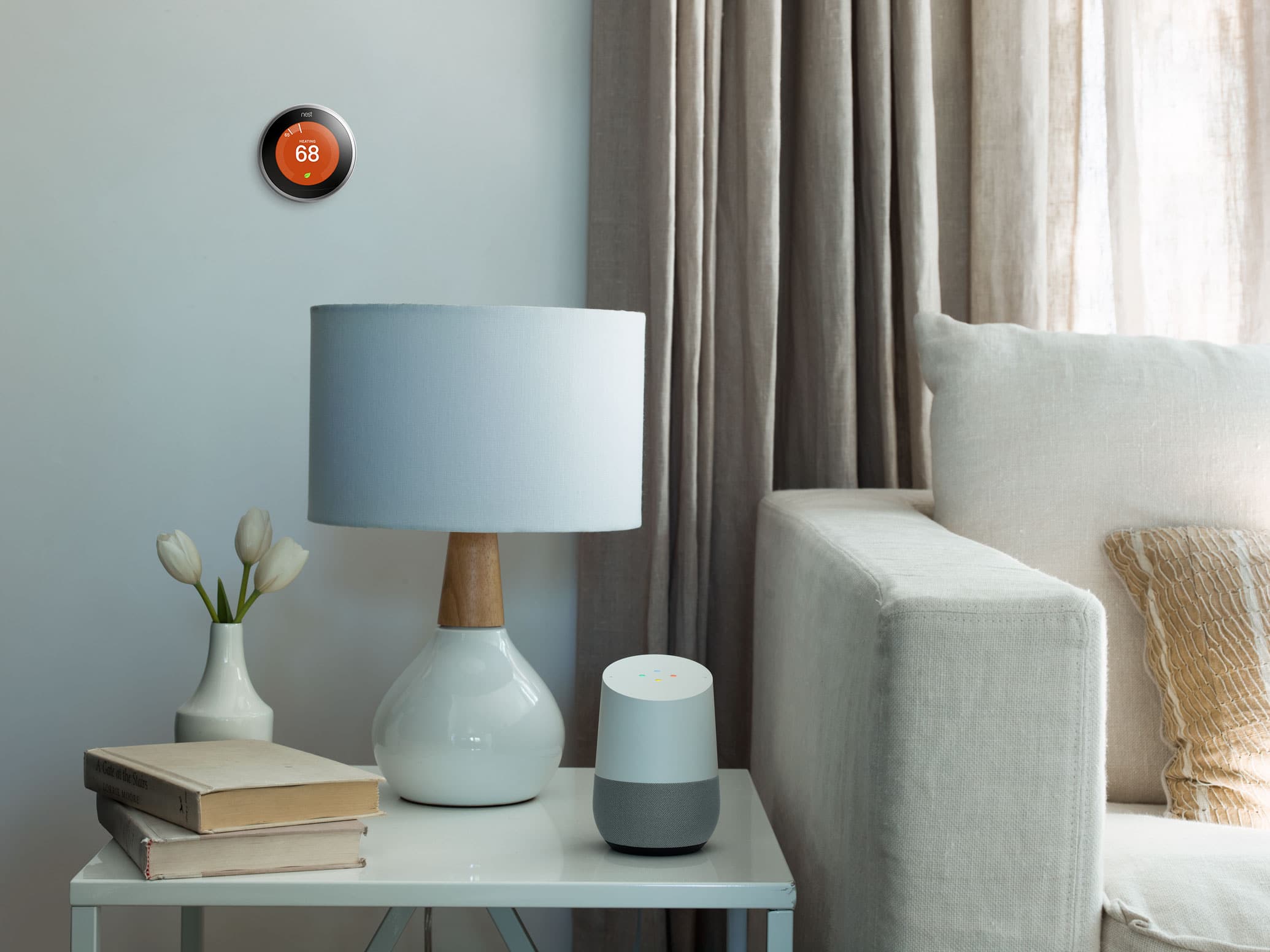
Photo courtesy of Nest
If you don’t work from home or your house is empty most of the day, chances are you don’t need to run the heat or air conditioning during those hours you’re away. This is where having a programmable thermostat comes in handy, as it can be set to follow a schedule instead of running constantly.
Smart thermostats like those offered by Nest can even take things a step further by using machine-learning to constantly optimize your household’s heating and cooling strategies. On average programmable thermostats save homeowners up to 10% on their energy costs, whereas smart thermostats can help save approximately 12% on heating and cooling expenses.
12. Upgrade Your Windows
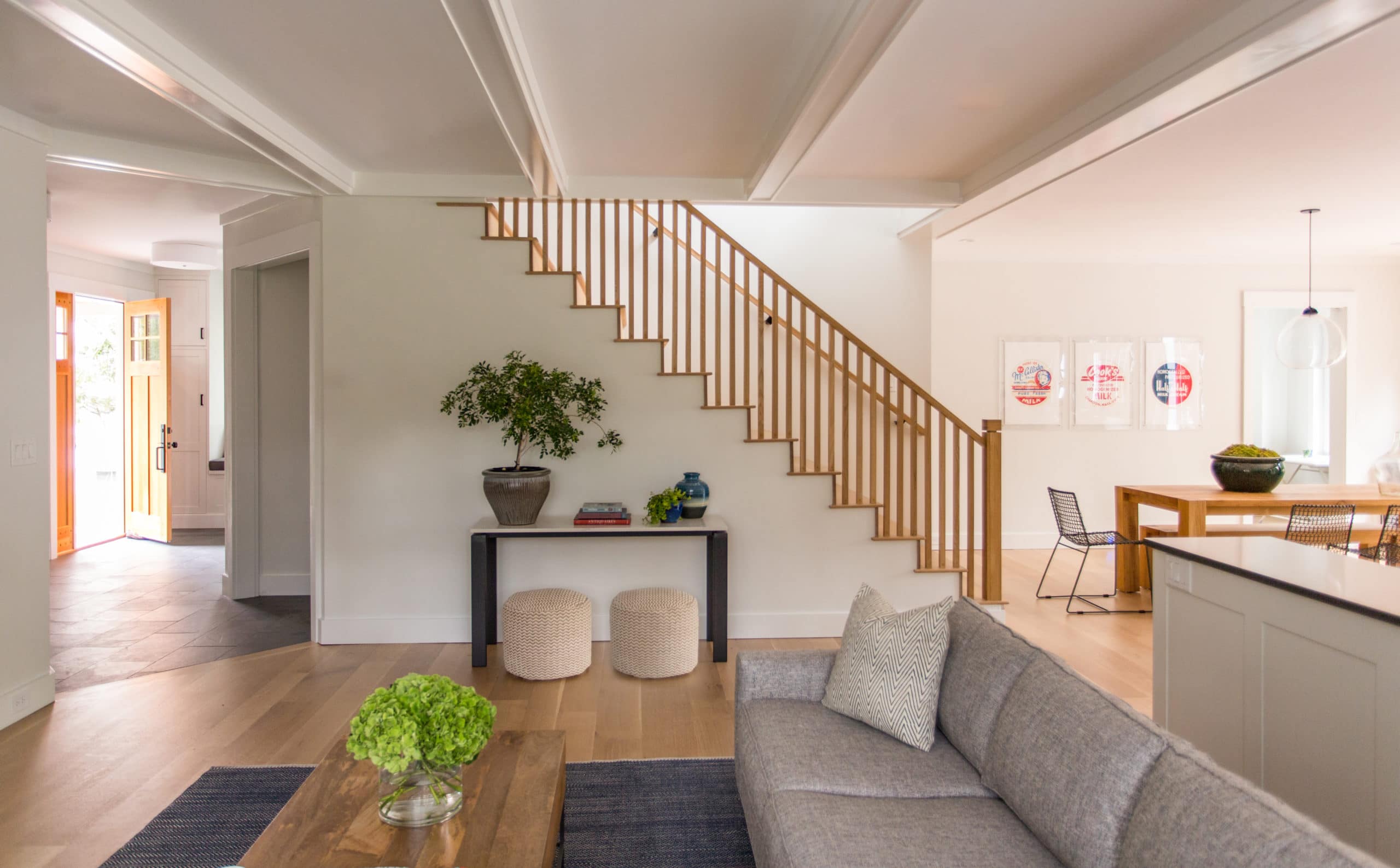
This LEED home in Wellesley, MA features continuous insulation, an airtight envelope, and triple-pane high-performance windows. Courtesy of Eric Roth
On average heat lost or gained through a home’s windows accounts for anywhere from 25 to 30% of residential HVAC energy usage. Standard double-pane windows allow 76% of the solar energy that falls on them to enter and become heat, increasing cooling loads. To reduce the amount of energy lost through your household’s windows, consider replacing them with energy-efficient alternatives, such as those bearing an ENERGY STAR label.
Generally speaking energy-efficient windows feature a frame with high thermal resistance (such as fiberglass), high-quality weather-stripping for improved sealing, and either dual- or triple-paned glass that contains inert argon gas between the layers for additional insulation. To reduce solar heat gain and block UV rays, energy-efficient windows often feature a low-emissivity coating or film that uses microscopic metal fragments to reflect solar energy.
When considering energy-efficient windows, take care to read up on what U-factor and Solar Heat Gain Coefficient (SHGC) is recommended for your particular climate zone.
13. Invest in a Low-Flow Toilet
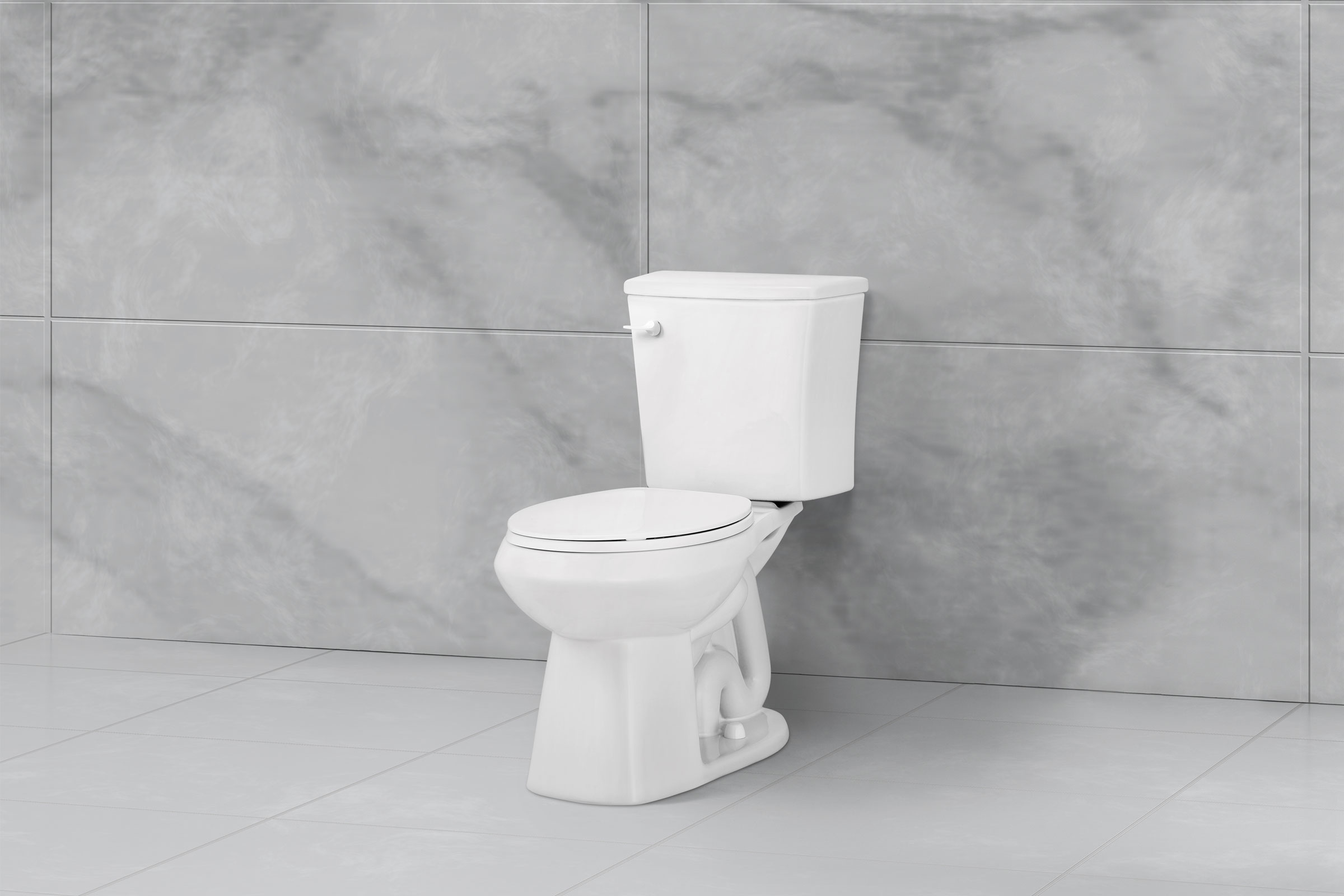
The type of toilet you choose contributes greatly to a project’s overall water efficiency. Photo courtesy of Niagara
Estimates suggest that roughly 27% of a household’s daily water consumption is the result of flushing the toilet, according to the EPA. To help your household conserve water, consider replacing your toilet with a low-flow alternative, such as those produced by Niagara, a leading manufacturer of high-performance bathroom fixtures.
In compliance with plumbing standards set by the US government, low-flow toilets use no more than 1.6 gallons of water to flush. If your home was constructed after 1994, chances are you already have one installed. If you live in an older house with a toilet that was constructed before 1994, however, you may be using up to 7 gallons of water per flush, meaning an upgrade is in order.
Of course, not all low-flow toilets are as effective as others. If you’re serious about saving water, select a highly efficient toilet that consumes no more than 1.28 gallons per flush. Ultra-efficient low-flow toilets can be recognized by their WaterSense certification, which denotes that they have successfully completed stringent independent laboratory testing with regard to performance and efficiency.
14. Install Low-Flow Showerheads
Consider replacing your existing showerhead with a low-flow version as well. On average standard shower-heads use 2.5 gallons of water per minute—and depending on the type of shower system you have installed (e.g. one with multiple shower-heads), you may be using even more.
Low-flow WaterSense approved shower-heads, on the other hand, use no more than 2 gallons of water per minute, potentially saving households 2,700 gallons each year. What’s more, low-flow shower-heads also reduce demand on water heaters, meaning they’ll also help you save on energy costs.
15. Switch to Low-Flow Faucets
While sink faucets typically account for the least amount of water used by most household fixtures, there’s still room for improvement where water usage is concerned. Older faucets typically flow at a rate of 1.5 to 2.2 gallons per minute, which is, by all accounts, more water than is necessary for most bathroom sinks.
Switching to a low-flow faucet that uses no more than 1.5 gallons per minute can reduce your sink’s water flow by 30% or more without compromising performance in the process, saving you money and reducing water heater usage.
16. Install a Rainwater Harvesting System
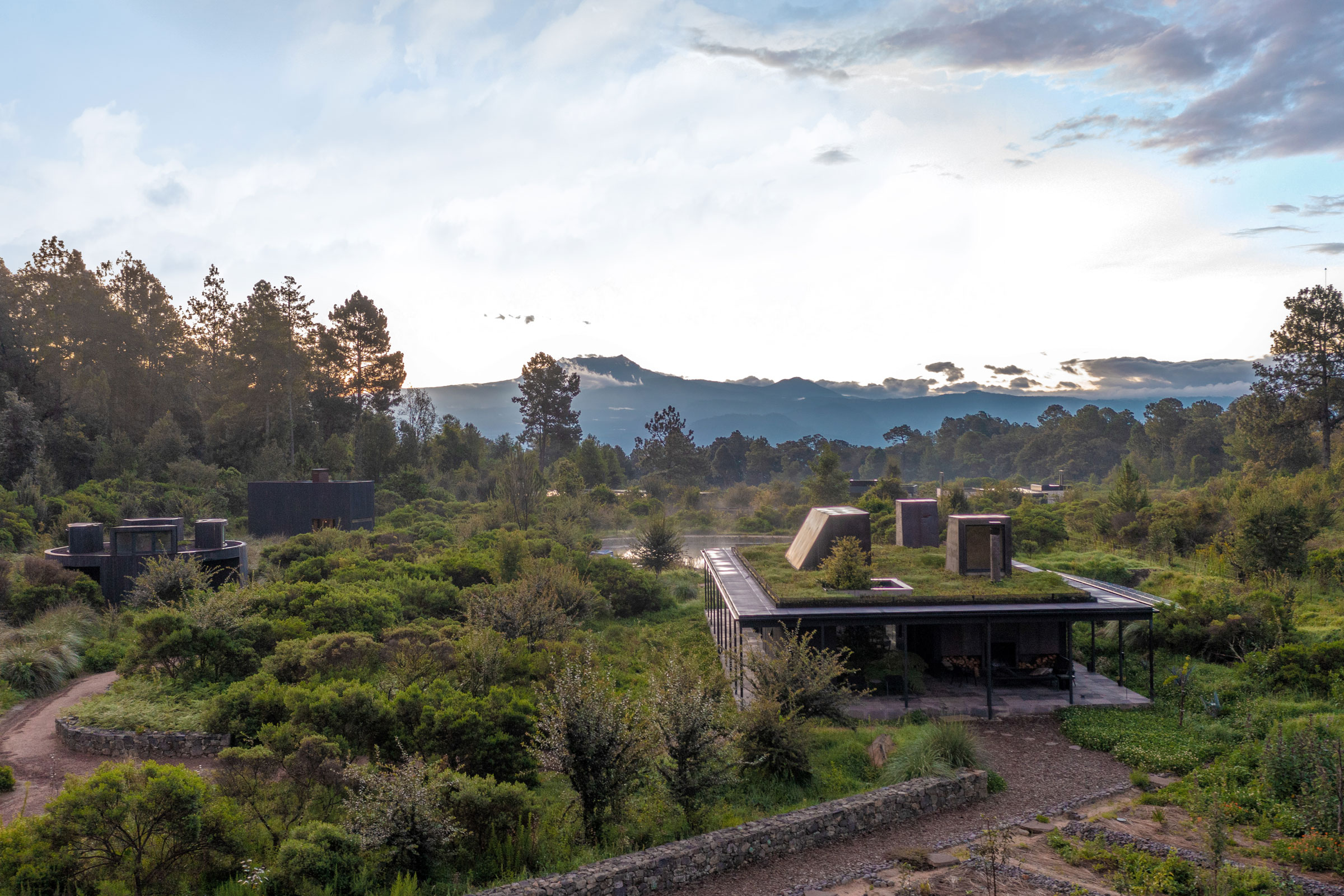
The Rain Harvest Home project is made up of three buildings that each collect rainwater to integrate with an above- and below-ground reservoir system. Photo by Jaime Navarro
Rainwater harvesting systems are a great addition to your home if you’re looking to improve overall sustainability, as they help to conserve water and mitigate stormwater runoff.
In the conventional sense a simple rainwater barrel or container is sufficient for collecting rainwater if all you’re looking to use it for is irrigation or gardening, but you could also take it one step further and hook up your rainwater catchment system to the household’s main plumbing to be used for washing clothes or flushing toilets.
You might even decide to have an onsite rainwater treatment system installed, which opens up more possibilities for what that rainwater can be used for.
17. Plant Trees Strategically
While it’s not always possible to implement elements of passive solar design after a house is built, strategically planted trees can aid in providing shade and natural lighting during different times of the year.
Deciduous trees—or those trees that lose their leaves—for example, are most effective when planted along west- and east-facing windows. In summer leafed trees provide shade and block solar heat admittance, reducing the need for air conditioning; in winter bare, un-leafed trees no longer block the windows and allow for maximum solar energy admittance.
All in all well-placed trees can save as much as 25% of the energy used to heat and cool the average household. Planting trees, especially native species, is also good for the environment and helps improve air quality, soil health, and biodiversity.
18. Practice Natural Landscaping

The roof overhangs form a shaded wrap-around deck as big as the house for indoor/outdoor living, with areas for outdoor grilling, dining, and lounging. Photo by Lance Gerber
Most residential landscaping prioritizes the cultivation of a single species of grass—e.g. zoysia, Kentucky bluegrass, ryegrass, fescue, etc.—that is periodically cut to achieve the picture-perfect lawn. And while this may look appealing, this type of landscaping is quite devastating for ecosystem biodiversity and soil health and contributes significantly to greenhouse gas emissions (through regular mowing) and water waste.
A more sustainable alternative to conventional landscaping is natural landscaping, or the practice of landscaping with plant species indigenous to your area. Natural landscaping requires less maintenance, uses less water (as the chosen species are already suited to the local climate and precipitation patterns), provides habitats and sustenance for birds and insects, and promotes the development of healthy, diverse soil microbiomes.
Similarly, drought-tolerant landscaping is ideal for households in very dry, drought-prone areas, as it aims to significantly reduce—or completely eliminate—the need for irrigation by incorporating native plants that thrive with little to no supplemental water.
19. Compost Food Waste
It might seem arduous at first but composting kitchen food waste is actually fairly simple and can be done in a variety of ways. If you have outdoor space the easiest composting method is cold composting—or the process by which (mostly) anaerobic microorganisms ferment and break down waste, with minimal external involvement. All you really have to do is pile your organic material on the ground or in an open-sided bin in a partially shaded area of your yard.
It’s generally recommended you start with a layer of “brown” material (leaves, dry grass, small twigs, newspaper, cardboard, etc.) that measures roughly six inches deep and then start adding your nitrogen-rich “green” material (fruit and vegetable scraps, coffee grounds, eggshells, young weeds, fresh grass clippings, etc.). Anytime green waste is added to the pile, add a layer of brown waste to cover it.
Cold compost does not need to be turned periodically, but you can use a pitchfork every once and a while to mix the layers together if desired. Using this method you’ll have healthy, garden-ready compost in approximately six months to a year.
20. Start a Garden
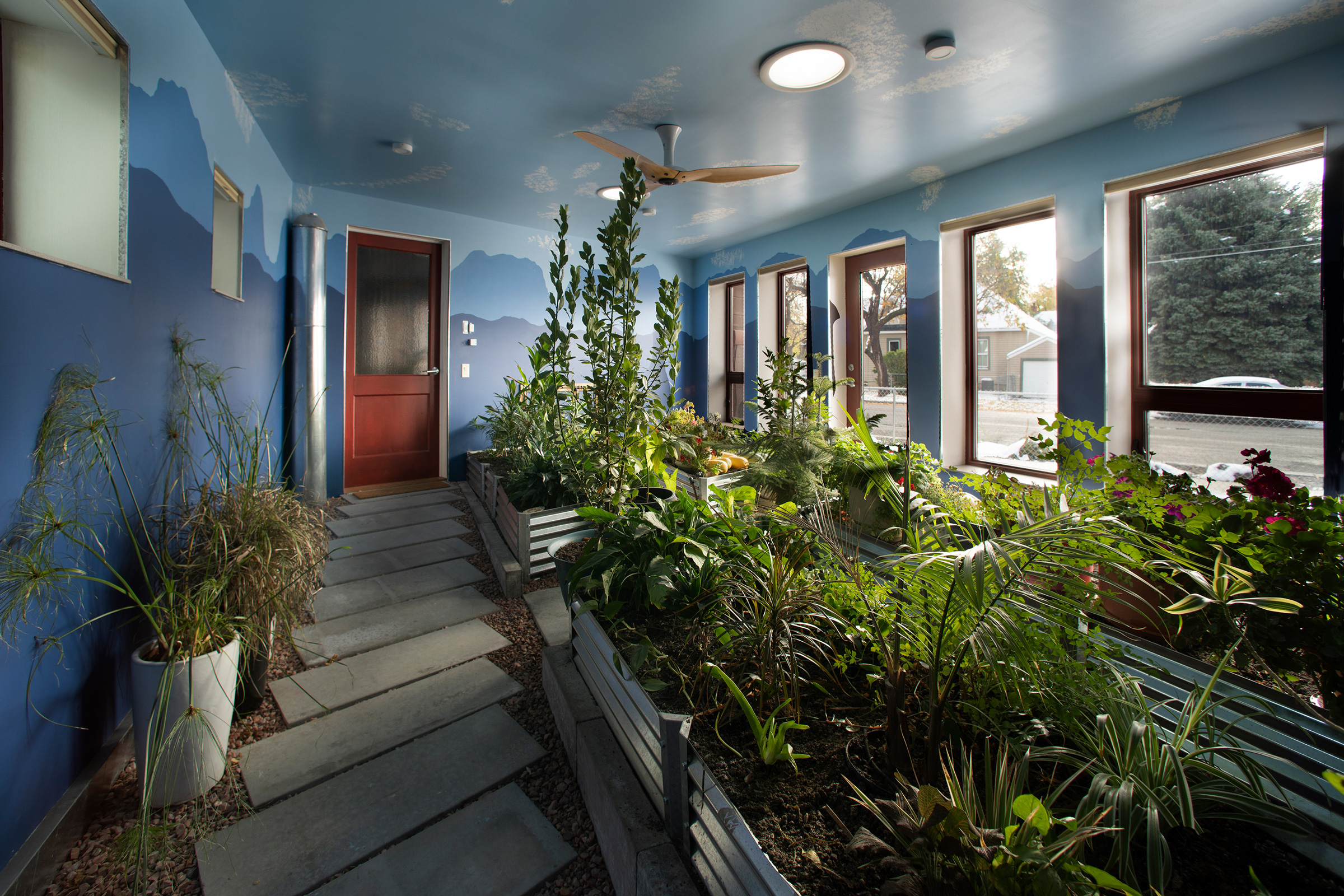
The home features a four-season Garden Room visible from the street through large windows. Photo by Clark Marten
If you’re already composting your household’s organic waste and don’t know what to do with it, consider starting a vegetable garden and growing a portion of the produce you eat. This helps reduce emissions associated with driving to the grocery store or having your produce delivered, while also bolstering food security by reducing dependency on the large-scale agricultural industry.
An effective garden doesn’t even need to take up a large portion of your yard—plants can even be grown in pots on a porch or balcony. If you’re new to gardening, start small with beginner-friendly plants like bell peppers, tomatoes, radishes, onions, and leafy greens. Many species of herbs—basil, parsley, cilantro, etc.—can even be grown indoors as long as they receive enough sunlight during the day.

